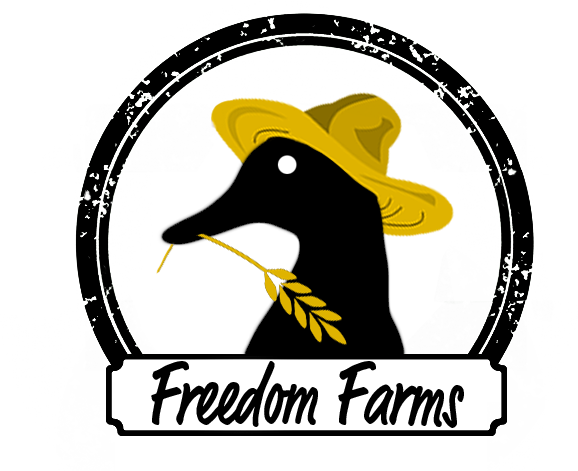Structural Support for Vegetable, Herb, and Flower Plants - Comprehensive Step-by-Step Guide
AmandaShare
Many plants require structural support to prevent breakage, improve air circulation, reduce disease, and maximize yield. Proper support keeps plants upright, encourages strong growth, and protects fruits and flowers from damage.
This guide covers:
✅ Which plants need structural support
✅ Types of plant supports
✅ Step-by-step instructions for setting up supports
✅ Best practices for tying and maintaining supported plants
1. Why Plants Need Structural Support
✅ Prevents stems from bending or breaking under heavy fruits or flowers.
✅ Encourages vertical growth, saving garden space.
✅ Improves airflow, reducing disease risks.
✅ Keeps fruit and flowers off the ground, preventing rot and pest infestations.
✅ Increases sunlight exposure, improving growth and yield.
2. Plants That Need Structural Support & Recommended Methods
| Plant Type | Why It Needs Support | Best Support Type |
|---|---|---|
| Tomatoes 🍅 | Heavy fruit, weak stems | Cages, stakes, trellises |
| Peppers 🌶 | Tall, top-heavy when fruiting | Single stakes |
| Cucumbers 🥒 | Vining, benefits from vertical growth | Trellises, cages |
| Squash & Pumpkins 🎃 | Large fruit, sprawling vines | Slings for fruit, trellises |
| Pole Beans | Vining, needs to climb | Poles, teepees, trellises |
| Peas | Delicate stems, climbing growth | Trellises, netting |
| Eggplants 🍆 | Heavy fruit, weak stems | Single stakes, cages |
| Melons (Cantaloupe, Watermelon) 🍈 | Large fruit, can snap vines | Trellises with fruit slings |
| Corn 🌽 | Tall, can fall over in wind | Mound soil around base |
| Climbing Flowers (Morning Glory, Clematis, Sweet Peas) 🌸 | Needs vertical growth | Trellises, arbors, fences |
| Tall Flowers (Sunflowers, Dahlias, Gladiolus) 🌻 | Heavy flowers, weak stems | Stakes, cages, netting |
| Herbs (Rosemary, Lavender, Thyme) 🌿 | Woody stems may break in wind | Small stakes, pruning |
3. Types of Structural Supports
Each plant has specific support needs based on its growth pattern.
A. Stakes
✅ Best for: Tomatoes, Peppers, Eggplants, Tall Flowers
✅ Material: Wood, bamboo, metal
✅ Setup:
- Insert stakes 6–12 inches deep into soil before planting.
- Space 6–12 inches away from plants to avoid root damage.
- Tie plants to stakes using soft garden ties or twine (loosely to allow growth).
B. Cages
✅ Best for: Tomatoes, Peppers, Bush Beans, Eggplants, Some Flowers
✅ Material: Metal, wire, plastic
✅ Setup:
- Place cages around seedlings while small to prevent root damage.
- Secure cages in the soil at least 6 inches deep.
- As plants grow, gently guide stems through cage openings.
C. Trellises
✅ Best for: Cucumbers, Peas, Pole Beans, Climbing Flowers
✅ Material: Wood, metal, netting, string
✅ Setup:
- Install trellis before planting to avoid disturbing roots.
- Train vines by loosely tying tendrils to the structure.
- For cucumbers and beans, guide growth upward by gently weaving them through the trellis.
D. Arches & Arbors
✅ Best for: Climbing Flowers (Morning Glory, Clematis, Sweet Peas), Vining Vegetables
✅ Material: Wood, metal, PVC
✅ Setup:
- Position over or beside plants before they start climbing.
- Train vines upward using soft ties or clips.
- Regularly check and adjust plant growth direction.
E. Netting & String Supports
✅ Best for: Peas, Pole Beans, Tall Flowers (Gladiolus, Dahlias)
✅ Material: Nylon, plastic, mesh
✅ Setup:
- Secure netting between two sturdy stakes or a frame.
- Guide plants to climb naturally or with ties.
- For flowers, weave stems through the netting for support.
F. Slings for Heavy Fruits
✅ Best for: Pumpkins, Melons, Large Squash
✅ Material: Fabric (pantyhose, mesh bags)
✅ Setup:
- Tie fabric slings around large fruit growing on trellises.
- Attach slings to trellis frame to support weight.
- Adjust as fruit grows to prevent damage.
4. Step-by-Step Guide to Setting Up Support Structures
A. How to Stake Vegetables & Flowers
- Choose a stake (bamboo, wood, metal) at least 1 foot taller than the plant’s expected height.
- Insert stake 6–12 inches deep into soil before planting or when seedlings are small.
- Tie plant stems loosely using soft ties (avoid tying too tightly to prevent stem damage).
- Adjust ties as plant grows, allowing flexibility.
B. How to Install a Trellis for Climbing Plants
- Select a sturdy trellis (wooden, metal, wire mesh).
- Place 6–12 inches behind plants to allow room for growth.
- Secure the trellis at least 12 inches deep for stability.
- Guide young vines by tying gently with soft ties or twine.
C. How to Use Tomato Cages
- Choose a cage at least 3-4 feet tall for determinate tomatoes, 5 feet+ for indeterminate varieties.
- Place the cage around the plant when young (early growth stage).
- Push cage 6 inches into the soil to anchor it firmly.
- Weave branches through the cage openings as they grow for natural support.
D. How to Support Heavy Fruits with Slings
- Cut a piece of soft fabric or netting (old pantyhose, mesh bag).
- Wrap around the growing fruit, leaving space to expand.
- Tie each end of the sling to a strong trellis for weight distribution.
- Check and adjust as the fruit grows to prevent strain.
5. Best Practices for Maintaining Supported Plants
✅ Check supports regularly – Adjust ties as plants grow.
✅ Loosely tie plants to prevent cutting into stems.
✅ Remove supports at the end of the season to prevent disease buildup.
✅ Reinforce stakes and trellises before storms to protect tall plants.
✅ Prune excess growth to keep plants balanced and supported.
Final Thoughts
Proper structural support is essential for healthy plant growth, higher yields, and disease prevention. Whether you're growing vegetables, herbs, or flowers, using the right support system at the right time ensures a strong, productive garden. 🌱🌿🌸
